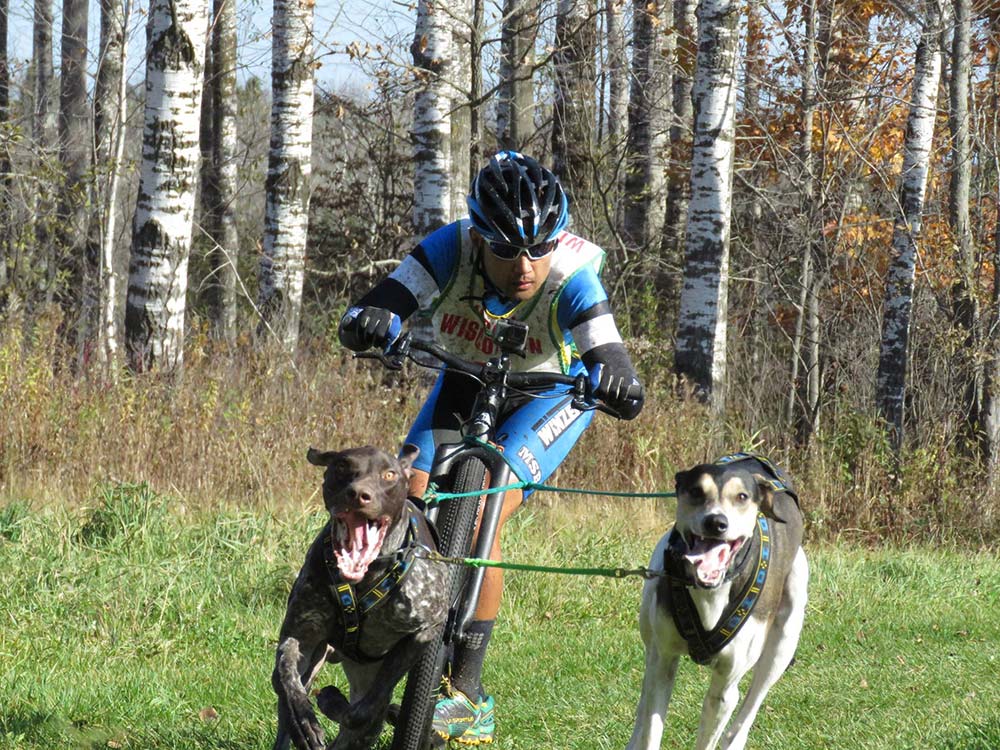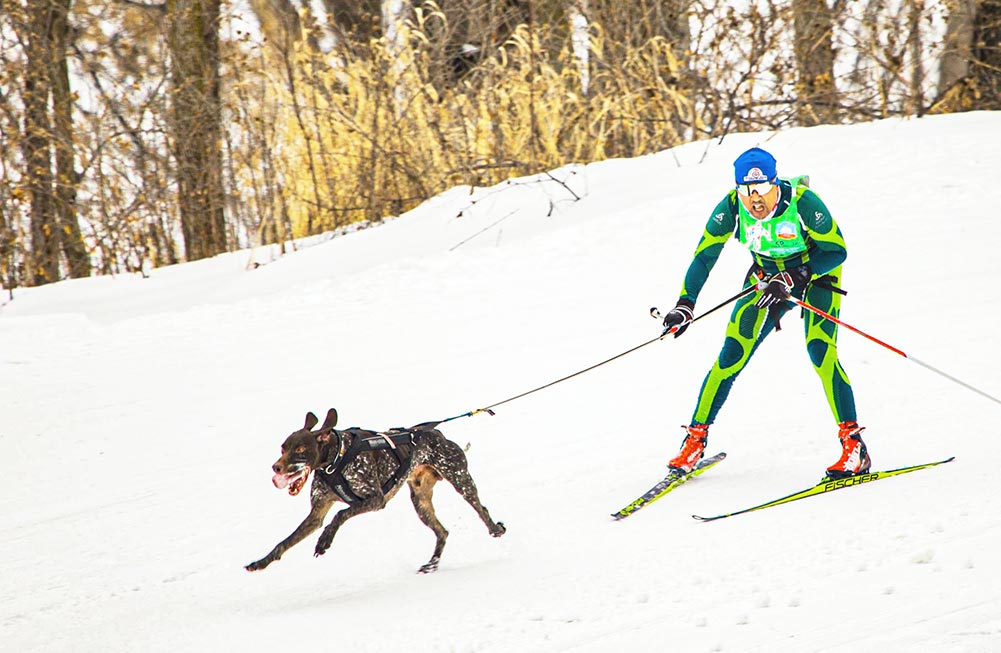Most people, even dog lovers, have probably never considered getting into dogsledding. As Elisa Shoenberger found, dogsledding is something you can do almost anywhere — even in the big city.
I fell in love with dogsledding thanks to a chance comment made by a colleague when we shared a bike ride. She told me about a women’s retreat in Minnesota where you can learn how to dogsled. A year later, a friend and I went to the retreat and we both fell in love with the dogs and the sport. As a lifelong dog owner, I was overwhelmed by the passion of the dogs for running; it was incredible to me to see them barking and jumping, excited to run for hundreds of miles.
Since then, my love of dogsledding has increased. My friend and I went to the start of the Yukon Quest in 2019 and 2020, following the competitors into rural Yukon Territory and Alaska. If you get me started on dog sledding at a party, you’ll find 30 minutes have passed before I realize that I’ve talked nonstop about the sport.
When people think of dog sports, they often think of 1000-mile dogsledding competitions like the Iditarod or the Yukon Quest. That was what I thought, too. But at a friend’s baby shower, I had my dogsledding world opened up to other dog sports, ones that were practically in my backyard. I met a person who was involved with Windy City Mushers, and was surprised to learn there were sports people with a few dogs could get into right in Chicago, with or without snow.
There’s skijoring (pronounced just like it looks), which is cross-country skiing with the dogs harnessed to you. And there are sports that don’t even require snow. In bikejoring, one to two dogs (or more) are attached to the bike and pull it along. Canicross is running with a dog or two pulling you. And there’s also scootering, where four to 10 sledding dogs run with you rolling behind on a wheeled scooter.

The Windy City Mushers have meet-ups in forest preserves and other areas around Chicago and Northern Illinois to train dogs and their owners on these sports for fun. But there’s also the International Federation of Sleddog Sports that holds competitions where people race for glory and gold.
Rich Kisseloff and Rick Richter, founders of Windy City Mushing, became involved in the world of dog sports because they wanted to find an outlet for their energetic huskies. About 10 years ago, they met at Green Valley Dog Drivers in the South Side of Chicago and decided to start their own group.
Since founding the group, Kisseloff took the competitive route and raced in competitions through North America and Europe. He was taking first or second places in skijoring and bikejoring races in North America. However, when he went to 2015 IFSS’s World Championships in Germany, he had a “huge wakeup call.” He was finishing close to last.
Kisseloff realized he didn’t have the right dogs to compete on the international stage. While Siberian and Alaskan huskies are typical dogs for long-distance mushing, they are not as prevalent in smaller dog sport races. Huskies can overheat; many long-distance mushers describe -10 degrees Farenheight is the perfect temperature to run dogs. In higher temperatures, many pros race eurohounds, a mixed breed dog, or, even better, greysters, a mix of German Shorthaired Pointer and greyhound. Now Kisseloff has a greyster named Guinness and he’ll compete in two dog races with just this one dog.
Since teaming up with his dog Guiness, Kisseloff has taken first in scootering, and third in canicross and bikejoring for the 2016 Dryland North American championships. While he’s still working on getting to the podium in the international championships, he says, “I just love the sport, the competitiveness, the training of the dogs…I’m in the sport for the long haul.”
Dogs over 20 lbs. are ideal, but he notes that one person brings their chihuahua named Maisy who pulls a sled with a group of other dogs.
Just a few years ago, Chicagoland winters were nicely suited to urban dogsledding excursions, but winters have gotten trickier for training for both Kisseloff and Windy City Mushers.
“The last two winters have been really bad for snow,” Richter notes.
The group used to have 10 snow days a season. Now it’s more like two or three, and, with climate change, that pattern seems unlikely to turn around any time soon. Kisseloff has had to change his training by going further north into Wisconsin and Minnesota to train on snow. Long-distance racers, who participate in 300- or 1000-mile races, and mushers in Alaska and Canada, are facing much more drastic changes in climate than in Chicago.

Windy City Mushers meetups are casual. Wendy Richter, Rick’s wife, coordinates all the dogs at the meetup since she knows the dogs and gets the teams organized. People are invited to bring their dogs so they can learn about the sports. The Richters bring harnesses and other equipment so new folks or people without their own equipment can enjoy themselves.
You don’t have to participate in the sport, but you can have your dogs run with other teams, depending on their temperament. Richter points out that people should bring their own dogs. Dogs over 20 lbs. are ideal, but he notes that one person brings their chihuahua named Maisy who pulls a sled with a group of other dogs.
While the coronavirus has put a dent in events for 2020, I look forward to going to a meet up of the Windy City Mushers in the future. I can’t wait to meet the local dog owners and their dogs who show off their athletic prowess. But most of all, I hope we can bring our spirited dog who might take to canicross or bikejoring. These dog sports will be a great way of getting her to expend some of her endless energy — and it might just help us, too.
